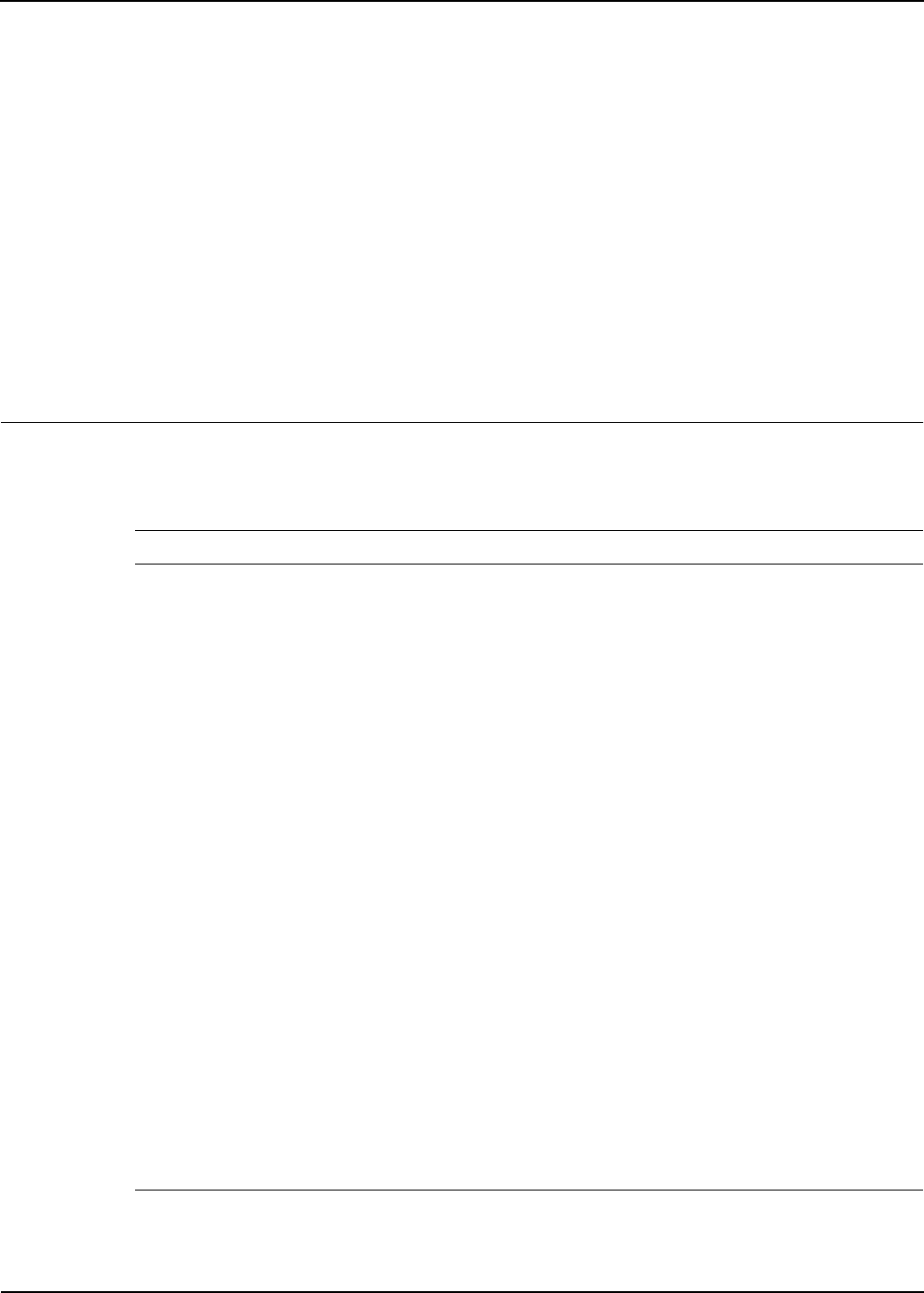User's Manual
Table Of Contents
- Contents
- About This Guide
- Chapter 1
- Active System Manager Overview
- Chapter 2
- Getting Started
- Chapter 3
- Account Management
- Chapter 4
- User Profile Management
- Managing Security Functions
- Managing Groups
- Defining Permissions
- Modifying Permissions
- Managing Authentication Repositories
- Chapter 5
- Inventory Management
- Understanding Resource Modeling
- Building a Standard Active System Manager Inventory
- Configuring Discovery Setup
- Running Discovery
- Using Resource Types
- Using Resource Instances
- Building Resource Instances
- Modifying Core Properties for Resource Instances
- Modifying Resource Instance Resource Availability Dates
- Modifying Resource Instance Interfaces
- Displaying the Resource Availability Calendar View
- Deleting Resource Instances
- Setting Inventory Parameter Values
- Resolving Resource Dependencies
- Using Resource Interface Types
- Linking Resources
- Importing Inventory
- Importing Connectivity
- Exporting Connectivity
- Managing Resource Pools
- Managing Maintenance Windows
- Managing Virtual Resources
- Chapter 6
- Firmware Management
- Creating Active System Manager Software Repositories
- Updating Dell Chassis Firmware from the Operations Center
- Updating Dell Server Firmware
- Updating Dell Blade/Rack Servers Firmware from the Operation Center
- Updating Dell Blade/Rack Servers Firmware from an Active Session
- Updating Dell Blade/Rack Servers Firmware Using the Attach Server Profile Virtual Operation
- Updating Dell Blade/Rack Servers Firmware through an Orchestration
- Updating Dell Blade/Rack Servers Firmware Using the Attach Server Profile Custom Operation
- Minimum Firmware Versions for Active System Manager Components
- Chapter 7
- Server Template and Profiles
- Creating a Server Template
- Editing a Server Template
- Adding or Editing BIOS Information on a Server Template
- Adding or Editing RAID Information on a Server Template
- Adding or Editing Firmware Settings on a Server Template
- Adding or Editing Networks Settings on a Server Template
- Naming Conventions when using Orchestrations
- Server Profiles
- Chapter 8
- Using Inventory
- Chapter 9
- Repository Management
- Chapter 10
- Network Management
- Chapter 11
- Template Management
- Template Types
- Working with Templates
- Creating New Templates
- Saving Templates
- Changing Template Ownership and Permissions
- Opening Templates
- Closing Templates
- Deleting Templates
- Managing Template History Details
- Filtering Templates
- Validating Templates
- Importing Templates
- Exporting Templates
- Attaching a Template Image
- Scheduling Templates
- Archiving Templates using the Templates View
- Restoring Archived Templates
- Updating Templates using the Template Editor
- Viewing and Modifying Template Properties
- Adding Resource Types
- Setting Resource Type Properties for Scheduling
- Deleting Resource Types
- Adding Resource Types Based on Manufacturer Only
- Adding Resource Instances
- Modifying Resource Properties
- Deleting Resource Instances
- Defining Provisioning Policies
- Supporting Layer 2 Switching
- Using Annotations
- Updating Templates using the Link Editor
- Associating an Orchestration Workflow with Templates
- Chapter 12
- Session Management
- Introducing the Sessions Perspective
- Working with Running Sessions
- Scheduling a Session Using Templates
- Creating an Instant Session
- Opening Sessions
- Opening the Session Editor
- Using the Sessions Calendar
- Viewing Session Properties
- Editing Default Session Properties
- Assigning and Changing Session Ownership
- Canceling Sessions
- Deleting Sessions
- Purging Sessions
- Rescheduling Sessions
- Managing Session Links
- Handling Link Preemption
- Managing Session Resources
- Associating Scripts to Sessions
- Archiving Sessions
- Supporting Layer 2 Switching
- Saving Sessions
- Configuring Session Notifications and Reminders
- Starting and Stopping ASAP Rescheduling
- Managing Virtual Resources
- Chapter 13
- Orchestration Management
- Chapter 14
- Working with Test and Script Execution
- Chapter 15
- Reports
- Chapter 16
- Settings
- Chapter 17
- Dashboard

Defining Permissions
User Profile Management 4-19
Deleting Groups
To delete a group, perform the following steps:
1. Open the Security Management window; see the “Accessing a User List” section on page 4-2.
2. From the group list, select a group (or groups) to delete. (You can select more than one group at a time
by holding down the Ctrl key and highlighting multiple groups.)
The Confirm Delete dialog box displays, prompting you to confirm the deletion.
3. Click OK to delete the selected group (or groups).
The Security Management—Groups tab window displays the updated information with the group (or
groups) removed.
Defining Permissions
Table 4-1 defines the built-in permissions based on a user’s role.
Table 4-1 Built-In Permissions Based on Roles
Functionality Administrator Role User Role
Inventory • Full access to inventory management
(types, instances, connectivity/links)
• Manage dependencies
• Manage interface type and compatibility
matrix
• Read-only view of the entire inventory
• R/O view of interface types
Discovery Access to Discovery functions None
Security • Manage all users, includes user profile,
memberships, and permissions
• Manage all groups, includes group
profile, memberships, and permissions
Update its user profile only
Authoring • Create, modify and share all templates
• Open and Save As All templates
• Delete all templates
• Import all templates
• Export all templates
• Create, modify, and share templates
• Update owned templates
• Open only private- and public-owned
templates
• Delete owned templates
• Import/export templates
Scheduling/Sessions • Manage owned sessions
• Access to all sessions
• Purge sessions
• Manage owned sessions
• Create, update, delete owned sessions
Session Notifications • Define system-wide notifications
• Define owned session notifications
• Define specific session notifications
• Delete user-defined notifications
• Define owned session notifications
• Define specific session notifications
Archiving • Define system-wide archiving rules
• Archive/restore owned templates and
sessions
• Archive/restore any session
Archive/restore owned templates and
sessions










